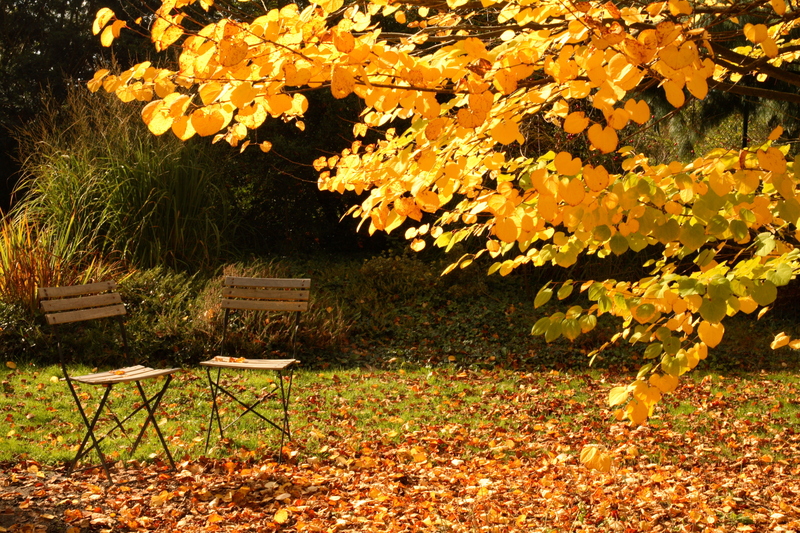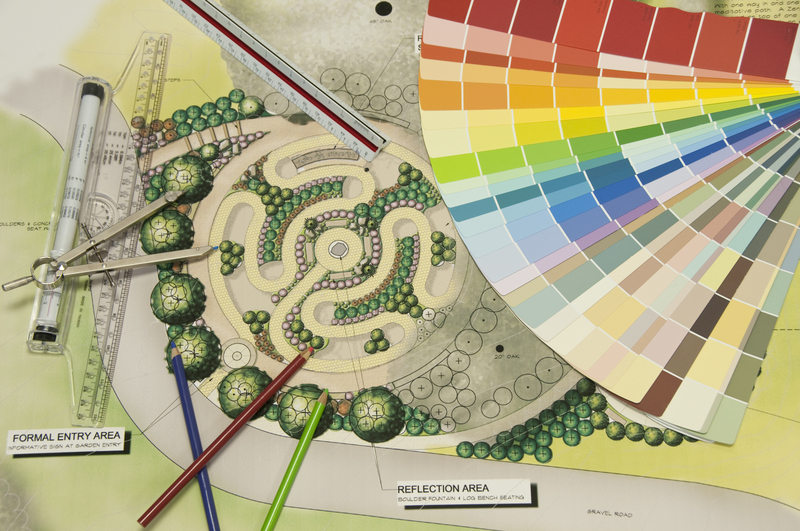Cultivating a Beautiful and Bountiful Herb Garden
Posted on 14/08/2025
Cultivating a Beautiful and Bountiful Herb Garden
Cultivating a beautiful and bountiful herb garden is a rewarding endeavor that brings flavor, fragrance, and vibrancy to your outdoor (or even indoor) space. Whether you're seeking a source of culinary inspiration, natural remedies, or a tranquil oasis teeming with diverse greenery, an herb garden can meet your needs. This comprehensive guide will take you through every step of creating a successful and thriving herb garden, from planning and soil preparation to harvesting and ongoing maintenance.
Why Grow an Herb Garden?
A herb garden is a practical and aesthetic addition to any home. There are several reasons why gardening enthusiasts and beginners alike are drawn toward cultivating their own herbs:
- Fresh Flavors: Elevate home-cooked meals with just-harvested, flavorful herbs.
- Medicinal Benefits: Many herbs possess properties that support wellness and can be used in home remedies.
- Pollinator Paradise: Herbs like lavender, basil, and thyme attract bees and butterflies, benefiting the ecosystem.
- Visual Appeal: From the silvery leaves of sage to the lacy fronds of dill, herbs bring unique textures and colors to the garden.
- Cost-Effective: Growing your own means no more pricey supermarket herb bundles that wilt after a few days in the fridge.
- Compact and Adaptable: Herbs are perfect for small gardens, patios, balconies, or even sunny windowsills.

Planning Your Beautiful and Bountiful Herb Garden
The foundation for a successful herb garden is careful planning. Assess the available space, sunlight, soil quality, and your culinary or medicinal interests before you start planting.
1. Choose the Right Location
- Sunlight: Most herbs--such as rosemary, basil, thyme, and oregano--thrive in full sun, requiring at least 6 hours of sunlight daily. Some, like mint, parsley, and chives, tolerate light shade.
- Accessibility: Place the herb garden where you can easily harvest from it: near the kitchen, a walkway, or a patio.
- Drainage: Good drainage is essential. Raised beds, containers, or berms can help if your soil stays soggy.
2. Select Your Herbs
Consider a mix of herbs for visual appeal, fragrance, and function. Choose from annuals, biennials, or perennials based on your climate and preferences. A balanced herb garden can include:
- Basil: Aromatic and essential for Italian, Thai, and Mediterranean dishes.
- Rosemary: Woody perennial with pine-like flavor, great for roasting.
- Thyme: Low-spreading perennial; classic in French cuisine.
- Oregano: Robust flavor for sauces and grilled meats.
- Parsley: Bright, mild, and nutritious.
- Dill: Feathery leaves, essential for pickling and salads.
- Mint: Vigorous grower, perfect for teas and desserts.
- Chives: Mild onion flavor, excellent garnish.
3. Design for Beauty and Ease
Enhance the visual beauty and practicality of your herb garden with thoughtful design:
- Plant in groups or drifts: Cluster the same type of herb together for aesthetic cohesion and more efficient harvesting.
- Mix heights and textures: Place taller herbs (like fennel or rosemary) in the back, with creeping varieties (such as thyme or oregano) at the front.
- Add structural elements: Use pathways, edging, and raised beds to give the herb garden definition and charm.
Soil Preparation and Fertility for a Flourishing Herb Garden
The key to a bountiful, thriving herb garden lies beneath the surface. Not all herbs require the same soil type, but most prefer:
- Well-drained soil: Avoid heavy clay. If necessary, amend with sand, perlite, or organic matter.
- Moderate fertility: Herbs often need less fertilizer than vegetables. Too much can lead to lush foliage with weaker flavor.
- pH: Most herbs thrive between 6.0 and 7.0 pH. Adjust with lime (to raise pH) or sulfur (to lower pH) as needed.
Prepare your beds by removing weeds, digging to at least 8-12 inches deep, and mixing in compost or well-rotted manure for nutrients and improved texture.
Planting Your Herb Garden: Seeds or Starts?
There are two primary ways to begin growing a herb garden: direct seeding or transplanting nursery-grown herb starts.
Starting from Seed
- Cheaper and allows for more variety.
- Best for annuals like basil, dill, cilantro, and chervil.
- Sow seeds according to the packet instructions, generally after the risk of frost.
- Keep soil consistently moist, but not waterlogged, until germination.
Transplanting Herb Starts
- Ideal for perennials (thyme, rosemary, sage) or slow-growing herbs.
- Allows for instant gratification and a head start on the season.
- Transplant well-watered seedlings on a cloudy day or in the early evening to minimize stress.
Essential Care for a Beautiful and Lush Herb Garden
Maintenance is a major factor in cultivating a strong and healthy herb garden. With minimal upkeep, your herbs can flourish from spring through fall--and even longer indoors.
Watering
- Most herbs prefer the soil to dry out slightly between waterings. Overwatering can promote disease and rot.
- Container herbs may need more frequent watering than those in-ground.
- Mulch around anewly-planted herbs to retain moisture, suppress weeds, and regulate temperature.
Fertilization
- Less is more: Over-fertilizing can dilute essential oils in leaves, reducing aroma and flavor.
- Apply a diluted, balanced fertilizer once or twice per season, or top dress with compost in spring.
Pruning and Harvesting
Regularly harvesting your herbs is key to encouraging bushy, vigorous growth and keeping plants from flowering prematurely:
- Harvest in the morning after dew has dried, when oils are most concentrated.
- Pinch or snip off sprigs just above a set of healthy leaves.
- Remove flower buds unless you want your herbs to self-seed; flowering reduces leaf flavor in many varieties.
Design Tips for a Beautiful Herb Garden
Your herb garden can be both productive and stunning if you pay attention to design principles:
Companion Planting with Herbs
- Herbs like basil deter tomato pests, and marigolds repel nematodes and aphids. Try planting these together.
- Dill and cilantro attract beneficial insects such as ladybugs and lacewings, which feed on garden pests.
Incorporate Flowers and Ornamental Features
- Nasturtiums, calendula, and borage are edible flowers that look gorgeous mixed in a herb border.
- Add decorative stakes, ceramic markers, or winding paths for charm.
Growing Herbs in Containers
If you lack garden space or soil quality is poor, container herb gardens are an excellent solution. Many herbs adapt well to pots, making them suitable for patios, balconies, or sunny window ledges.
- Choose containers with good drainage--herbs hate "wet feet."
- Use quality potting soil tailored for herbs, and avoid heavy garden soil.
- Give each herb enough space: Avoid overcrowding. For example, give basil 8"-10", rosemary its own pot, and thyme or oregano can cohabit.
- Rotate pots regularly to ensure even sunlight exposure.
Maximizing Yield in Your Herb Garden
- Succession Planting: Sow fast-growing herbs (like basil and cilantro) every few weeks to prolong harvests.
- Season Extension: Grow cold-tolerant herbs (parsley, chives, sage) into fall, and start cuttings or seeds indoors for winter use.
- Cut and Come Again: Many herbs regrow readily after harvesting--as long as you avoid cutting more than one-third at a time.
Harvesting and Preserving Your Herbs
For the most intense flavor and aroma, harvest your herbs just as their flower buds appear--this is when oils are at their peak.
- Drying: Tie small bundles and hang them upside down in a warm, airy room out of direct sun. Once crisp, crumble and store in airtight jars.
- Freezing: Chop and pack herbs in ice cube trays with water or olive oil for convenient use in soups and sauces.
- Making Herb-Infused Oils or Vinegars: Fill a jar with fresh, clean herbs and cover with oil or vinegar. Steep for several weeks before straining.
Troubleshooting Common Issues in Herb Gardening
- Pests: Encourage beneficial insects, use insecticidal soap, or handpick pests like aphids and caterpillars.
- Disease: Practice crop rotation, avoid overhead watering, and space plants for good air circulation. Remove affected leaves promptly.
- Overcrowding: Thin seedlings and divide perennial herbs regularly to avoid competition for resources.
Seasonal Care and Overwintering
- Bring tender herbs (basil, lemongrass) inside before the first frost.
- Mulch hardy perennials (sage, thyme, oregano, chives) in late fall to protect their roots from freezing.
- Pot up parsley or rosemary to enjoy fresh herbs on your windowsill all winter.

Creative Uses for Your Homegrown Herbs
A flourishing herb garden provides much more than just flavor for your kitchen. Here are some creative ways to use your abundant harvest:
- Herb wreaths and bouquets: Combine lavender, rosemary, thyme, and sage for a fragrant arrangement.
- Herb-infused butters, syrups, and teas: Enhance drinks and recipes with your favorite flavors.
- Natural skincare: Make balms, bath salts, or compresses using medicinal herbs like calendula or chamomile.
- Homemade pest repellents: Crush mint, rosemary, or bay leaves to deter household insects.
Conclusion: Start Cultivating Your Beautiful and Bountiful Herb Garden Today!
Embracing the journey of cultivating a beautiful and bountiful herb garden offers far-reaching rewards. Whether you plant a few pots of basil and thyme or design a sprawling, intricate herbaceous border, you're sure to enjoy delightful scents, vibrant greenery, and exceptional homegrown flavor.
Remember: Start with the right location, choose herbs that suit your needs, amend your soil for health and drainage, and practice regular harvesting and care. In return, your herb garden will reward you with abundance for many seasons to come.
Ready to dig in? Start planning your herb garden--your taste buds (and your landscape!) will thank you.

